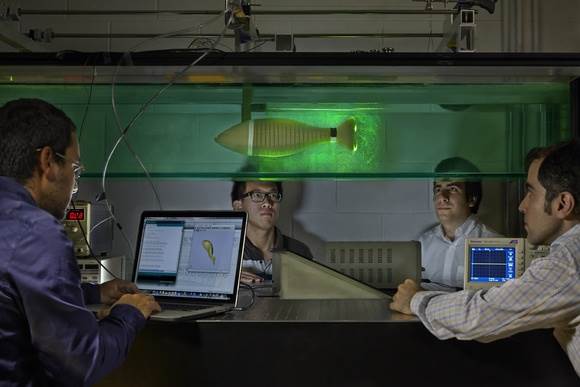The U.S. Navy has given researchers at Florida Atlantic University a $258,008 grant to study the movement of fish in order to enhance the motion of underwater vehicles.

Researchers at Florida Atlantic University are mimicking the motion of fish to improve the movement of underwater vehicles.
Credit:
Florida Atlantic University
Oscar Curet is an assistant professor at Florida Atlantic University. For the past couple of years, he’s studied the movement of the Knifefish, an animal native to the Amazon River, that uses a long ribbon fin to propel itself through the water and navigate its complex environment.
“As a engineer, we try to solve problems, and nature has solved some of the problems that we are facing, and one of them is mobility,” Curet said.
Curet, along with other researchers from Florida Atlantic University (FAU), has created a robot fish to identify the differences between engineering systems and what occurs in nature. The prototype is composed of 3D-printed materials, 16 motors, and a number of sensors. The team also recently received a grant from the U.S. Navy to equip their prototype with a Volumetric Particle Image Velocity System, or PIV. The system, which uses four cameras synchronized with a laser light to capture currents in three dimensions, will help researchers measure how fluid dynamics interact with the flexible propulsors the team has developed to make underwater vehicles more maneuverable.
Current underwater vehicles, while efficient, can’t be operated in complex environments, Curet says.
“If you look at most common submarines, they tend to be very slow motion, they are not highly maneuverable, they need a huge radius of curvature, or they rely on many types of propellers around their body if they want to increase their mobility.”
Curet and his team are still running tests on their robo-fish, but he hopes that eventually the technology will be used for tasks including underwater floor surveys, surveillance, and testing of underwater structures.







